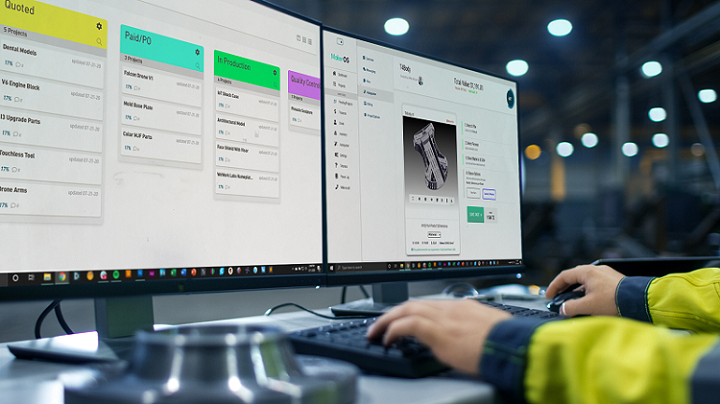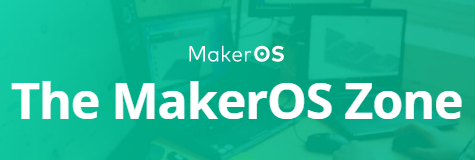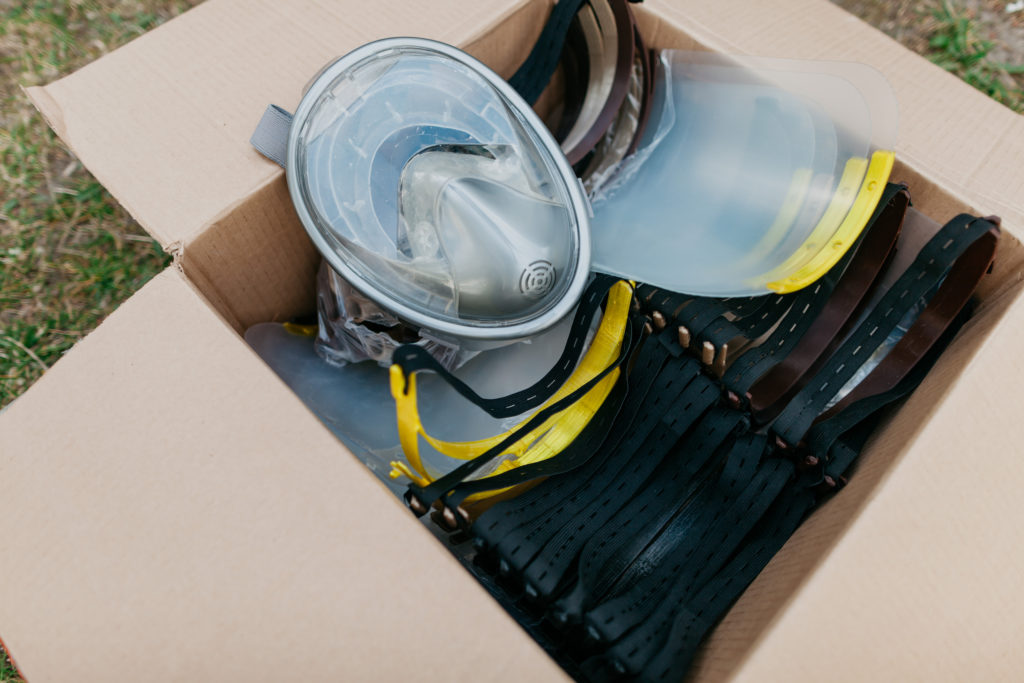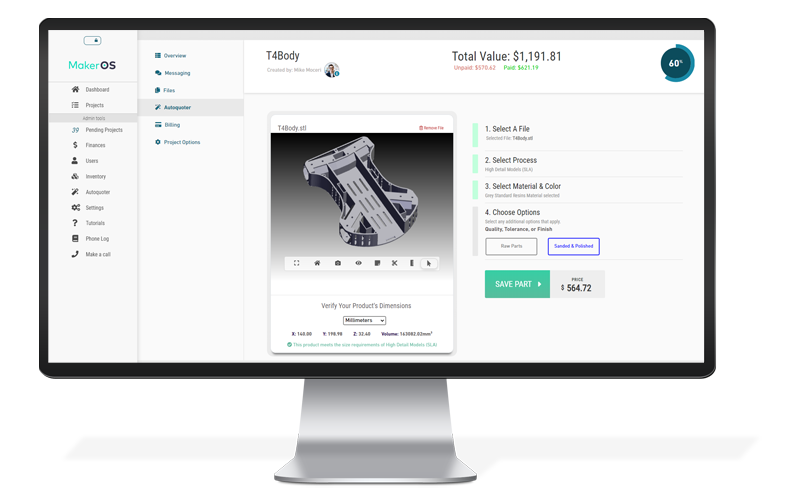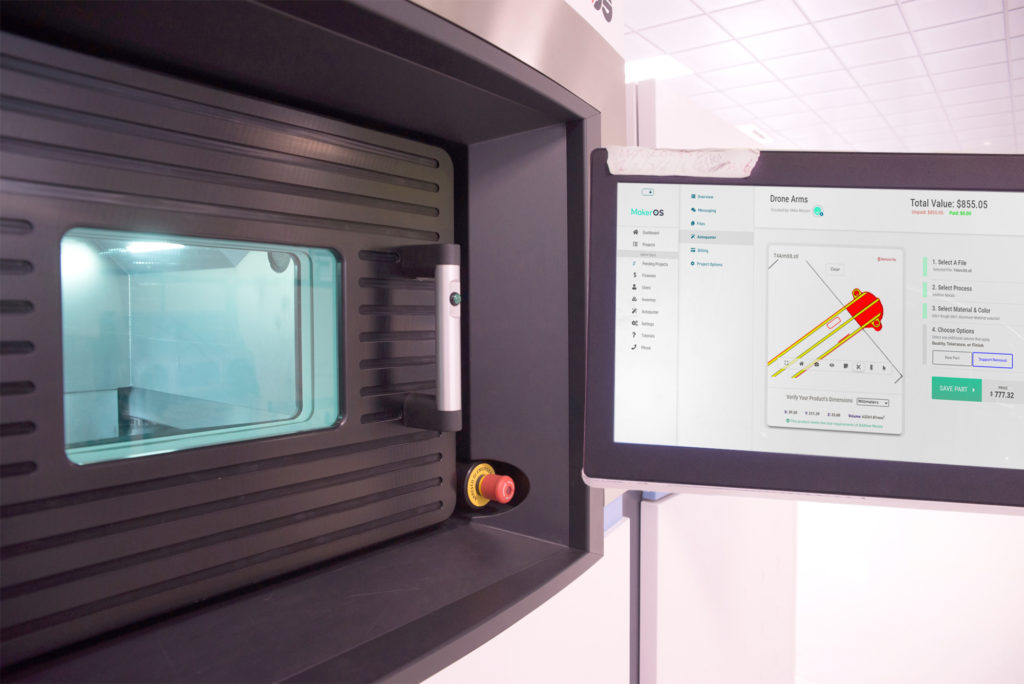How to Manage the Complexity of a 3D Printing Service
At first glance, most 3D printing projects look easy. To most of you, 3D printing is not complicated at all, but to customers, it can be quite complex. I can hear something that Calvin, in that old comic strip, Calvin and Hobbes, might say, “We just need to de-complexify this…”
You look at a customer’s CAD file, and you, as a 3D printer owner and operator, see a relatively easy part to print. It makes sense to you. Prospects ask if you can print with a specific material, but may not realize it will not work for their particular use case. You know this and spend time explaining it which leads to why your quote is different from another provider or details on how your machine works. But at all times, you are striving to make sure the customer does not get overwhelmed with all of the various options.
You need to build a process to “de-complexify” the quoting process in addition to educating prospects about how additive manufacturing works. After providing a quote, an internal process is needed to keep everyone informed and working from the proverbial “same page.” In essence, you need a communication hub, a command center, that lets you, sales, engineering, plus your clients, see your entire workflow at a glance. Instead of a flurry of emails, or a bunch of colorful sticky notes on a whiteboard, maybe migrate to a Kanban-style project board. You have probably seen these new, popular project management platforms, such as Trello, Asana, and how they help you keep projects organized.
Kanban got its start when an industrial engineer at Toyota in the 1940s, Taiichi Ohno, had an idea to keep inventory moving efficiently. This inventory control system, made up of colored cards to track production and shipments, is the visual cue that people need to keep work processes flowing. When you make these sorts of cues or cards available to sales, engineering, and clients, you remove complexity from the 3D printing process.
At the heart of MakerOS is a Kanban-esque approach so that you have a dashboard, just like in a car, that gives you all the mission-critical information you need about the situation at hand. This project dashboard provides a real-time look at everything related to a print job — all the communication, uploaded files, quotes, invoices, and details you want to track about it in one glance. These visual cards can be shifted around as the project changes or moves through your workflow updating the customer and everyone on the team.
As the company owner, a real-time dashboard gives a “just in time” snapshot of revenue, progress across all print jobs, the entire sales pipeline, when new projects are created, and other variables that you decide are mission-critical to helping you improve your business.
Conclusion: If you automate your quote process, in essence, you are “decomplexifying” it and one of the major stumbling blocks for the customer. After winning the job with a simple, but complete quote, providing transparency into the internal workflow and build process will create an open platform that builds trust with a customer. Ultimately, your 3D printing business and processes may grow more complex, but that does not mean your customer has to get confused by it. As you grow, at every step, strive to be like Calvin and keep decomplexifying.
MakerOS removes complexity so that you can remain focused on doing what you do best: running a 3D printing service and getting prints out the door to customers. Visit us today to schedule a demo of how our robust communication hub approach can help you streamline projects from quote to finish. We offer a 30-day free trial to help you see how much more you can get done with a real-time dashboard built around 3D printing.
About the Author:
 Mike Moceri has deep experience in manufacturing, design, and software. In 2013, he co-founded the world’s first 3D printing retail service bureau in Chicago. In 2014 he founded Manulith, a 3D printing and product design agency, where his clientele included Fortune 500 companies within the aerospace, automotive, and medical industries. Mike is also a mentor at Stanley+Techstars Additive Manufacturing Accelerator, a mentor at WeWork Labs in NYC, and formerly a mentor at TechTown Detroit. He’s previously been featured on MSN, Make Magazine, NBC, and the Encyclopedia Britannica. D-Business Magazine called him the “Face of 3D printing.” Mike is currently the founder and CEO of MakerOS, an all-in-one collaboration platform for additive manufacturing services to efficiently work with clients throughout the entire lifecycle of a project.
Mike Moceri has deep experience in manufacturing, design, and software. In 2013, he co-founded the world’s first 3D printing retail service bureau in Chicago. In 2014 he founded Manulith, a 3D printing and product design agency, where his clientele included Fortune 500 companies within the aerospace, automotive, and medical industries. Mike is also a mentor at Stanley+Techstars Additive Manufacturing Accelerator, a mentor at WeWork Labs in NYC, and formerly a mentor at TechTown Detroit. He’s previously been featured on MSN, Make Magazine, NBC, and the Encyclopedia Britannica. D-Business Magazine called him the “Face of 3D printing.” Mike is currently the founder and CEO of MakerOS, an all-in-one collaboration platform for additive manufacturing services to efficiently work with clients throughout the entire lifecycle of a project.
The post How to Manage the Complexity of a 3D Printing Service appeared first on 3DPrint.com | The Voice of 3D Printing / Additive Manufacturing.
MakerOS Webinar: Make the Most Profit from Your 3D Printing Business
Web-based collaboration platform for 3D printing and digital fabrication companies MakerOS assists users in developing their products faster, no matter the stage or size of the company. It was founded by CEO Mike Moceri, who has copious amounts of experience in design, manufacturing, software, and business: he co-founded the very first 3D printing retail service bureau, located in Chicago, back in 2013, and followed this move by founding 3D printing and product design agency Manulith the next year.
 MakerOS is sponsoring a free webinar, which 3DPrint.com is organizing, called “How to Make the Most Profit from 3D Printing,” which will be held on Wednesday, September 16th, 2020, from 2-3 pm EDT. Any digital fabrication business owner or 3D printing shop manager looking to run a more successful business should definitely sign up for this webinar.
MakerOS is sponsoring a free webinar, which 3DPrint.com is organizing, called “How to Make the Most Profit from 3D Printing,” which will be held on Wednesday, September 16th, 2020, from 2-3 pm EDT. Any digital fabrication business owner or 3D printing shop manager looking to run a more successful business should definitely sign up for this webinar.
“If you don’t understand your costs, you don’t understand your business,” Moceri told 3DPrint.com.
Let’s say that you have successfully completed a 3D printing job for a client, but instead of the substantial profit you were expecting, you only barely broke even. If you care about staying afloat, you’ll want to determine the underlying cause of something like this. That’s why this webinar is so important—you’ll learn how to keep this from happening and gain a deeper understanding of all the various expenses and costs that go into running your 3D printing business. This way, you will be able to set accurate, fair prices and maximize your profits.
“So what we’ll do in this webinar is we’ll figure out what are the core and most important points of cost analysis. We’ll go into detail on how to determine margins and profits for your operation, as well as the philosophy and rationale behind those calculations,” Moceri explained to us.
“We’ll provide a framework and how to think about your business starting with the costs and then we’ll talk about the philosophical aspects of determining margins and ultimately profits for your business.”
By attending this MakerOS webinar, you’ll come away with the knowledge of how to successfully run your digital fabrication or 3D printing shop. The insights attendees will gain can help steer thinking towards a cost-specific perspective, leading to higher profits, and you’ll learn how to recognize subtle things that could negatively affect your margins.
Every webinar attendee will receive access to a spreadsheet that they can use to make calculations and projections to, as Moceri explained, “see what the most optimal path to profitability is for their business.” In addition, the participants will have the chance to learn all of this from someone who has consulted with industry experts from all around the world and has successfully started multiple 3D printing services…Moceri himself.
Featured on MSN, NBC, Make Magazine, the Encyclopedia Britannica, and the D-Business Magazine, which once called him the “Face of 3D printing,” Moceri was once a mentor at TechTown Detroit, and currently serves as a mentor at WeWork Labs in NYC and the Stanley+Techstars Additive Manufacturing Accelerator. He is also an author, having recently published an e-book titled How to Survive the COVID-19 Pandemic as a 3D Printing or Fabrication Shop, along with 9 Lessons for Optimizing Your Product Development Service. You can find both of Moceri’s e-books on the recently launched MakerOS Zone of our website.
What else can you expect to see in the MakerOS Zone? Plenty! There are also free video tutorials, such as “How to Price for SLA 3D Printing” and “Why We Made a 3D Printing Pricing Calculator,” along with the aforementioned pricing calculator itself. The MakerOS Zone also includes articles about the company that have been published on our website, as well as MakerOS articles found elsewhere on the web. Finally, you can access the company’s webinars “How to Optimally Price For Your 3D Printing Service Bureau in 2020,” and “How to Make the Most Profit from 3D Printing,” as previously mentioned. You can register here for the latter, which will be held on Wednesday, September 16th, 2020, from 2-3 pm EDT.
The post MakerOS Webinar: Make the Most Profit from Your 3D Printing Business appeared first on 3DPrint.com | The Voice of 3D Printing / Additive Manufacturing.
You’re Using Too Many Software Applications to Run Your 3D Printing Business
5 Reasons You Should Continue Scaling Your 3D Printing Service During COVID-19, and How to Do So
Creating a scalable business is a phrase often heard in startups and new venture circles, but what does it mean? You could say growth, or perhaps, strong sales, and you would not be wrong, but scaling is much more than those two ideas.
Sell more. This is often touted as the complete solution for how to scale a business. Another is to simply add more machines or people to increase capacity.
The well-worn mantra of “selling more” does not always solve the problem, nor does adding more capacity. Scaling means you build efficient processes. If you have not built organized processes to handle and serve the customer, then you are not ready to scale your 3D printing service.
A scalable business includes the flexibility and versatility to expand your business in a cost-effective way. It involves expansion so increased workloads do not overwhelm your team or disappoint your customers. Scalability is delivering without destroying your company. Scaling your business is more than exponential growth.
You may be asking, especially during the COVID-19 pandemic, why bother trying to scale during a potentially slower economy? Here are five reasons to consider:
- Improved efficiency usually results in cost-savings.
- By preparing for scalable growth, you can create more consistent plans for the ups and downs (and may discover new ways to weather this current “down”).
- Scalability creates adaptability to roll with economic changes and pressure.
- Businesses which carefully consider scalability are much more likely to survive
- Streamlining internal processes, automating them as much as possible, will make you a much stronger competitor in the marketplace once the storm is over.
Realizing these benefits for your 3D printing business will not be easy if you are hacking together a variety of disconnected software tools to get the job done. All you’re doing at that point is creating separate instances of data with varied access within your team and increasing your software bloat.
You and I both know putting together a streamlined and in-sync workflow is not easy. There are a variety of platforms or desktop software that let you combine some of the processes that 3D printing companies need. You want to combine a customer-friendly front end (a quoting tool on your landing pages or home page), and then integrate some or all of your backend, internal processes so that you can track customer communications in a logical way (keeping them informed of job progress, for example), and keep the internal pipeline of work in one place so that everyone can get to it quickly and easily.
I learned these lessons early on in my career after founding multiple 3D printing services in Chicago and Detroit. I searched for a tool that solved for these problems, but none existed. That’s why I started MakerOS.
MakerOS is a web-based collaboration platform for 3D printing and digital fabrication companies to develop products faster, regardless of company size or stage. My team and I built this platform over the past few years, and already it’s been used in thousands of projects for 3D printing services with clients from around North America.
I sought out to create a business operating system for professional fabricators, engineers, designers, and makers, and together with my team that’s exactly what we’ve done.
If you feel like you need an operating system that’s specifically built for someone like you to help your 3D printing service scale, especially during this global pandemic, check us out. Or drop us a note and request a live demo to learn more about how we help you make more.
About the Author:
 Mike Moceri has deep experience in manufacturing, design, and software. In 2013, he co-founded the world’s first 3D printing retail service bureau in Chicago. In 2014 he founded Manulith, a 3D printing and product design agency, where his clientele included Fortune 500 companies within the aerospace, automotive, and medical industries. Mike is also a mentor at Stanley+Techstars Additive Manufacturing Accelerator, a mentor at WeWork Labs in NYC, and formerly a mentor at TechTown Detroit. He’s previously been featured on MSN, Make Magazine, NBC, and the Encyclopedia Britannica. D-Business Magazine called him the “Face of 3D printing.” Mike is currently the founder and CEO of MakerOS, an all-in-one collaboration platform for additive manufacturing services to efficiently work with clients throughout the entire lifecycle of a project.
Mike Moceri has deep experience in manufacturing, design, and software. In 2013, he co-founded the world’s first 3D printing retail service bureau in Chicago. In 2014 he founded Manulith, a 3D printing and product design agency, where his clientele included Fortune 500 companies within the aerospace, automotive, and medical industries. Mike is also a mentor at Stanley+Techstars Additive Manufacturing Accelerator, a mentor at WeWork Labs in NYC, and formerly a mentor at TechTown Detroit. He’s previously been featured on MSN, Make Magazine, NBC, and the Encyclopedia Britannica. D-Business Magazine called him the “Face of 3D printing.” Mike is currently the founder and CEO of MakerOS, an all-in-one collaboration platform for additive manufacturing services to efficiently work with clients throughout the entire lifecycle of a project.
The post 5 Reasons You Should Continue Scaling Your 3D Printing Service During COVID-19, and How to Do So appeared first on 3DPrint.com | The Voice of 3D Printing / Additive Manufacturing.
The Fastest Way to Scale Your 3D Printing Business
Scaling a business is more than just adding customers and profits. Scaling includes having an easy automated process in place for new potential clients to start a project with you. Technology is certainly a big part of this, but more so it involves a mindset to give your customer the tools needed to get answers that move them along the path of doing business with you more often.
We know that prospective customers often just want to know, “how much will this cost?” so we must be able to have a quick answer for them, ideally one that’s automated but also inexpensive. Larger service bureaus are able to afford the front-end tools that prospects increasingly expect – notably, the ability to quote a project online in seconds.
Let’s cut right to it: You need a tool to quote projects faster and more completely, more comprehensively. Ideally, this “get a quote” calculator is built right into your website working 24/7 for you. You want to be able to quote the project without investing tons of your time, your top engineer’s time, or demanding more of the prospective customer’s time.
Perfecting the quoting process for 3D printing services is what pushed me to start MakerOS, and it’s one that we continue to solve. We’ve noticed that successful companies go beyond a robust quote methodology and website tool.
Ultimately, they start connecting internal processes (including sales and customer experience tools), and then link it to a healthy customer relationship management (CRM) process (one built specifically for 3D printing and additive manufacturing companies which dramatically help retention and future referrals).
Let’s look at these three areas to improve the customer experience and your profitability:
Start with the Quote
- Convert more prospects into paying customers when you use a holistic quoting methodology. People are going to come to your website expecting they can enter some basic parameters, a copy of the file to be printed or made, and get a rough idea of the cost.
- Capture relevant information for salespeople and engineers during the quoting process. Information that will close any gaps between sales and engineering will create better collaboration and optimized workflows for you and your customer. Relevant information might include specific instructions the customer shares with the sales person, but in many companies would not get transferred immediately to the engineer. The earlier you put information in front of key people, the sooner your customer realizes he or she is at the center.
- You are not in the business of providing quotes; you are in the business of completing projects for clients.
Connect Your Processes to Set Yourself up for Success
- Sync the sales process with engineering and product development to become more efficient
- Automate a lot of the admin work to free up time to focus on the final product. Most CRM tools will allow you to send automated messages keeping customers up-to-date on what is happening with their project build.
- Provide a professional experience for your customer
Retain Customers
- Since receiving a fast quote is practically a requirement today, by doing so you will reduce attrition and build a client base. You will have more opportunities to converse with your prospect and win them over if you give them what they want – the quote – as fast as possible.
- When you include clients in your workflow, give them access to data about what will happen or is happening with their job, they will see you as a trusted provider. A bit of a shameless plug here: we believe the MakerOS Client Portal and Communication Hub enables a level of client collaboration because it focuses on unique aspects of running a 3D printing service bureau — keeping you in production mode.
- When you put the customer at the center, open up visibility into your production process, your clients will become champions of your business. They are more likely to give you referrals because of this transparency.
You’ll be better able to grow when you make it easy for your customer to do business with you via smart quote tools accessible on your website. After you have gained their trust with a fast and responsive quote, given them transparency into the workflow as the job gets done, you earn the right to keep in contact to encourage future business (using your customized CRM process). Keep scaling.
We built MakerOS with a holistic methodology to enhance your ability to quote 3D printing projects, taking into account all aspects of the business. You can test our 3D Printing Pricing Calculator that we developed to complement our new methodology.
MakerOS is a web-based, all-in-one collaboration platform for 3D printing and digital fabrication companies to develop products faster, regardless of company size or stage.
If you’re looking to ensure you’re pricing correctly, or how to scale your 3D printing business, contact us to learn more.
About the Author:
 Mike Moceri has deep experience in manufacturing, design, and software. In 2013, he co-founded the world’s first 3D printing retail service bureau in Chicago. In 2014 he founded Manulith, a 3D printing and product design agency, where his clientele included Fortune 500 companies within the aerospace, automotive, and medical industries. Mike is also a mentor at Stanley+Techstars Additive Manufacturing Accelerator, a mentor at WeWork Labs in NYC, and formerly a mentor at TechTown Detroit. He’s previously been featured on MSN, Make Magazine, NBC, and the Encyclopedia Britannica. D-Business Magazine called him the “Face of 3D printing.” Mike is currently the founder and CEO of MakerOS, an all-in-one collaboration platform for additive manufacturing services to efficiently work with clients throughout the entire lifecycle of a project.
Mike Moceri has deep experience in manufacturing, design, and software. In 2013, he co-founded the world’s first 3D printing retail service bureau in Chicago. In 2014 he founded Manulith, a 3D printing and product design agency, where his clientele included Fortune 500 companies within the aerospace, automotive, and medical industries. Mike is also a mentor at Stanley+Techstars Additive Manufacturing Accelerator, a mentor at WeWork Labs in NYC, and formerly a mentor at TechTown Detroit. He’s previously been featured on MSN, Make Magazine, NBC, and the Encyclopedia Britannica. D-Business Magazine called him the “Face of 3D printing.” Mike is currently the founder and CEO of MakerOS, an all-in-one collaboration platform for additive manufacturing services to efficiently work with clients throughout the entire lifecycle of a project.
The post The Fastest Way to Scale Your 3D Printing Business appeared first on 3DPrint.com | The Voice of 3D Printing / Additive Manufacturing.


